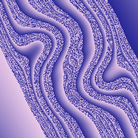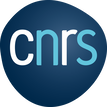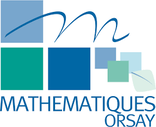|
Scientific Committee
Comité scientifique Keith Burns (Northwestern University) |
Organizing Committee
Comité d’organisation Christian Bonatti (CNRS /Université de Bourgogne) contact: beyondhype2019@gmail.com |
|
In the last 20 years, the body of research on smooth dynamical systems beyond uniform hyperbolicity has grown rapidly and substantially. Among recent achievements, important progresses have been obtained towards the conjectures of Pugh and Shub, and of Palis. We plan to hold a meeting (school and conference) at the CIRM (Marseilles) over two weeks in May or June 2019 focusing on the global qualitative study (topological and ergodic) of differentiable dynamical systems. Topics include : non-uniform, partial and singular hyperbolicity, Lyapunov exponents, statistical properties, stability and bifurcations, entropy and symbolic extensions, connections with foliations and group actions. . .
A main focus is on disseminating new results, attracting promising junior researchers and graduate students and training researchers. This meeting will also federate and stimulate the research of several groups of mathematicians working in several countries (France, Brazil, China, USA,. . . ) It belongs to a series of successful conferences organized since 2001 : they have been instrumental for collaborations among the participants, furthering the subject and leading to new connections between its different aspects. We would like to organize this meeting over two weeks, as it was the case previously. This would allow a three-pronged program : |
Les recherches de ces 20 dernières années ont permis un important développement dans le domaine de la dynamique différentiable, au-delà du cadre uniformément hyperbolique. Parmi les résultats récents, des progrès importants ont été réalisés dans la direction des conjectures de Pugh-Shub et de Palis. Nous avons le projet d’organiser une rencontre (école et conférence) au CIRM (Marseille) sur deux semaines en mai ou juin 2019, portant sur l’étude qualitative globale (topologique et ergodique) des systèmes dynamiques différentiables. Les thèmes abordés seront : l’hyperbolicité non-uniforme, partielle et singulière, les exposants de Lyapunov, les propriétés statistiques, la stabilité et les bifurcations, l’entropie et les extensions symboliques, les interactions avec les feuilletages et les actions de groupes,…
L’un des objectifs principaux sera de disséminer de nouveaux résultats, d’attirer des étudiants et des jeunes chercheurs, de former les collègues. Cette rencontre permettra également de fédérer et de stimuler les recherches de plusieurs groupes de mathématiciens répartis dans différents pays (France, Brésil, Chiné, États-Unis,. . . ) Elle s’inscrira dans la continuité de conférences organisées depuis 2001 : elles ont été essentielles pour la conduite de collaborations entre les participants, permettant l’avancement du sujet et l’émergence de nouvelles interactions entre différentes thématiques. Nous souhaitons organiser cette rencontre sur deux semaines, comme lors des sessions précédentes, afin de proposer un programme en trois parties : – une école : la moitiés des exposés de la rencontre seront des mini-cours présentant des avancées notables en dynamique différentiable, |
“Transfer operators for Anosov flows”
We present a functional-analytic approach to the study of transfer operators for Anosov flows. To study transfer operators, a basic idea in semi-classical analysis suggests to look at the action of the flow on the cotangent bundle. Though this idea is simple and intuitive (as we will explain in the lectures), we need some framework to make it work. In the lectures, we present such a framework based on a wave-packet transform.
Part II:(Viviane Baladi – 3 x 50 min)
« Transfer operators for Sinai billiards. »
We will discuss an approach to the statistical properties of two-dimensional dispersive billiards (mostly discrete-time) using transfer operators acting on anisotropic Banach spaces of distributions. The focus of this part will be our recent work with Mark Demers on the measure of maximal entropy but we will also survey previous results by Demers, Zhang, Liverani, etc on the SRB measure.
In the « theory » part of this mini-course, we will present recent objects and phenomena related to the study of big mapping class groups. In particular, we will define two faithful actions of some big mapping class groups. The first is an action by isometries on a Gromov-hyperbolic graph. The second is an action by homeomorphisms on a circle in which the vertices of the graph naturally embed. We will describe some properties of the objects involved, and give some fruitful relations between the dynamics of the two actions. For example, we will see that loxodromic elements (for
the first action) necessarily have rational rotation number (for the second action). Using these relations, we will explain how to construct non trivial quasimorphisms on subgroups of big mapping class groups. This includes joint work with Alden Walker.
Part II – Examples :
In this part we will discuss a number of natural examples in which big mapping class groups and their subgroups arise. These include the
inverse limit constructions of de Carvalho-Hall, the theory of finite depth (taut) foliations of 3-manifolds, the theory of “Artinization” of Thompson-like groups, two dimensional smooth dynamics, one dimensional complex dynamics (topology of the shift locus, Schottky spaces) and several other contexts. We will try to indicate how viewing these examples from the perspective of (big) mapping class groups is a worthwhile approach.
J. Bavard had to cancel her participation. The whole course will be given by D. Calegari.
Bibliography: G. Contreras. Ground states are generically a periodic orbit. Inventiones Mathematicae 205(2), 383-412 (2016).








